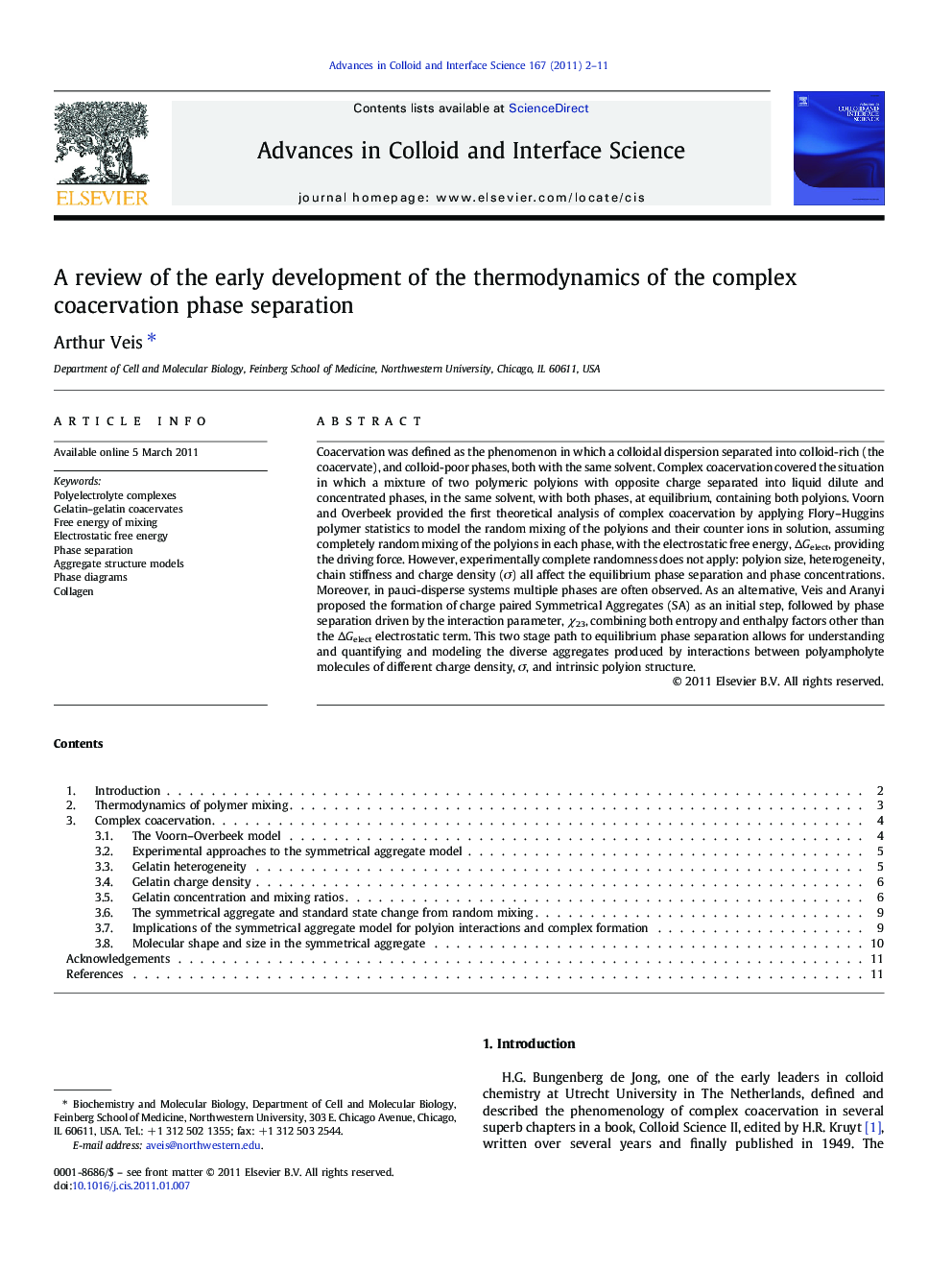| کد مقاله | کد نشریه | سال انتشار | مقاله انگلیسی | نسخه تمام متن |
|---|---|---|---|---|
| 590938 | 1453580 | 2011 | 10 صفحه PDF | دانلود رایگان |

Coacervation was defined as the phenomenon in which a colloidal dispersion separated into colloid-rich (the coacervate), and colloid-poor phases, both with the same solvent. Complex coacervation covered the situation in which a mixture of two polymeric polyions with opposite charge separated into liquid dilute and concentrated phases, in the same solvent, with both phases, at equilibrium, containing both polyions. Voorn and Overbeek provided the first theoretical analysis of complex coacervation by applying Flory–Huggins polymer statistics to model the random mixing of the polyions and their counter ions in solution, assuming completely random mixing of the polyions in each phase, with the electrostatic free energy, ΔGelect, providing the driving force. However, experimentally complete randomness does not apply: polyion size, heterogeneity, chain stiffness and charge density (σ) all affect the equilibrium phase separation and phase concentrations. Moreover, in pauci-disperse systems multiple phases are often observed. As an alternative, Veis and Aranyi proposed the formation of charge paired Symmetrical Aggregates (SA) as an initial step, followed by phase separation driven by the interaction parameter, χ23, combining both entropy and enthalpy factors other than the ΔGelect electrostatic term. This two stage path to equilibrium phase separation allows for understanding and quantifying and modeling the diverse aggregates produced by interactions between polyampholyte molecules of different charge density, σ, and intrinsic polyion structure.
Research Highlights
► The hypotheses of the Voorn–Overbeek theory of complex coacervation are described.
► The V–O theory requires random chains in both dilute and coacervate phases.
► Phase compositions of pI 5–pI 9 gelatin coacervates do not support random mixing.
► The Veis–Gates model proposes the formation of symmetrical aggregates in both phases.
► The V–G SA model predicts the observed MW fractionation in pauci-disperse systems.
Journal: Advances in Colloid and Interface Science - Volume 167, Issues 1–2, 14 September 2011, Pages 2–11